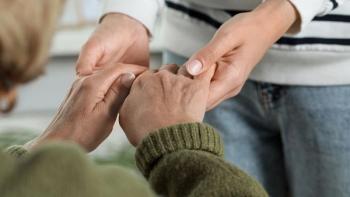
Combatting Difficulty Walking During Cancer Treatments
A physical therapist offers tips and exercises that can help patients with cancer who experiencing difficulty walking from either the disease or its treatments.
Patients with cancer can experience difficulty walking for many reasons, from chemotherapy-induced neuropathy (pain and tingling in hands and feet) to fatigue, weakness and muscle pain.
Some exercises can help patients regain their ability to walk or walk more safely, explained Leslie Waltke, a physical therapist who specializes in oncology. Waltke, who founded the Waltke Cancer Rehabilitation Academy, recently sat down with CURE® to discuss how patients can combat difficulty walking.
Transcript:
Ways to combat that is, first of all, you have to be able to stand to walk right, it seems kind of simplistic, but you have to be able to stand. And sometimes standing can be difficult. So that can you literally just stand.
The next thing you need to know is if you can stand on one leg, because think about it: every time we walk, at some point in the gait phase, we are literally standing on one foot. With neuropathies and weakness, sometimes that can surprisingly be taken away from us. So that's why, again, a physical therapist or a good plan for somebody who's having difficulty walking is literally just practice standing. Can you stand for three minutes? Five minutes? 10 minutes? Can you stand long enough to use the shower? Or to talk on the telephone? Or can you stand long enough to make yourself a sandwich — those things really become important.
So, if you find yourself sitting a lot, the first exercise we'll do is [for] every 30 minutes somebody is sitting, we want them to stand up for 30 seconds. You don't have to dance, you don't have to move, just physically stand for 30 seconds and then sit back down. [Do that] every 30 minutes that you're awake [and] that will help maintain that ability to just hold the standing position.
Then the second thing is to test yourself — preferably with a wall or something to hold on to or somebody that's near you — you literally put your finger on the wall and can you stand on your left leg for 30 seconds? Can you stand on just your right leg for 30 seconds? Can you do that while taking your hand off of the wall? If you can't, then you certainly need to do that to practice it. So when people say “Oh, I can't do that,” then I say “Well, then you need to do it.” If You can't do something, you have to work on doing it.
The more [ability or strength] you lose, the more it's going to take away from your life and your ability to care for yourself, your ability to stay independent, your ability to stay in your home. So those are really important things. Even getting up from a chair or getting up from the floor [is a] really important skill set for people that are really kind of getting kicked by cancer treatment.
Then the third thing is for most people, cancer treatment, even though it can last months and months and months long, is technically a temporary situation for most people. They're going to get to the other side of treatment at some point. So I will say, if this is a temporary situation, I want you to lean on medications. If you're if something's hurting and stopping you from walking, then take pain medication; talk to your physicians, talk to your physical therapist and use those things. That's absolutely fine.
You could also use an assistive device whether it's a walker or a cane, those things are absolutely fine. The reasons you would use an assistive device like a cane or a walker, [would be] number one if you have a joint or a back or something that really hurts you when you step on it, you can take the weight off of that [body part by] using a cane or a walker and you're going to unload that joint you're going to be able to walk better. A second reason you would use a device is because your balance is off for some reason again because of neuropathy or because of something going on in your brain or you're just kind of off. A walker or a cane will help you restore your balance and off you go. And then thirdly, there are some times when people are super fatigued, you can use a cane or a walker, just to help you go further faster. So you're just going to get more out of your energy when you have an assistive device. Sometimes people are really hesitant to use them. And I'm like, “You're an athlete, and you're just using a piece of exercise equipment to help you perform better perform safer, you get more out of your energy.”
For more news on cancer updates, research and education, don’t forget to



